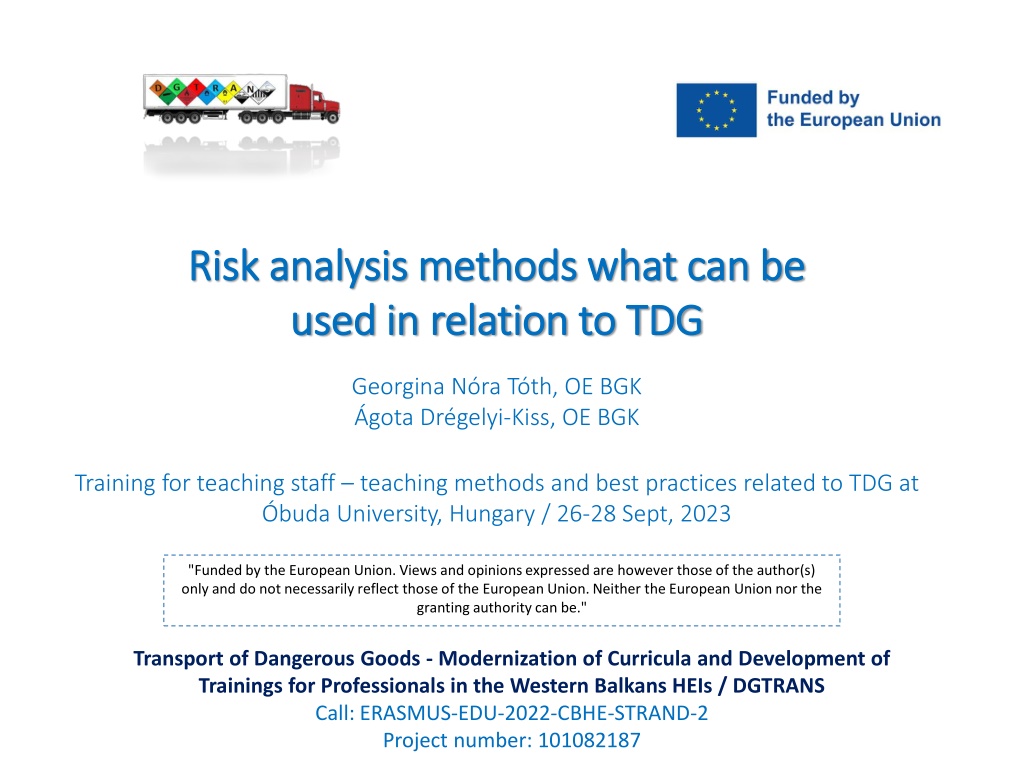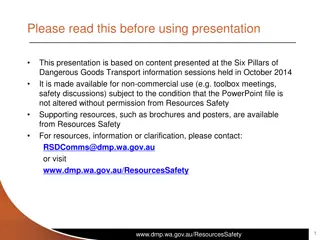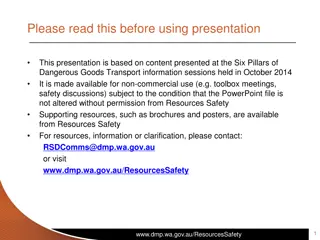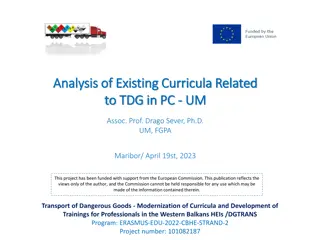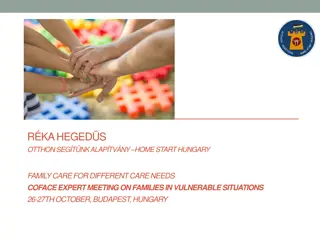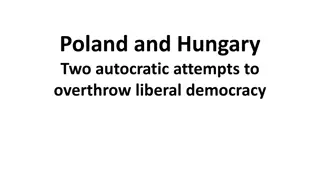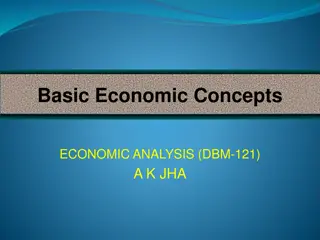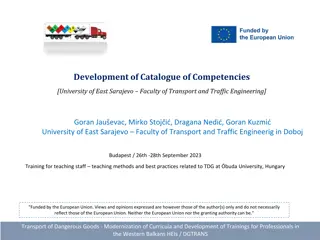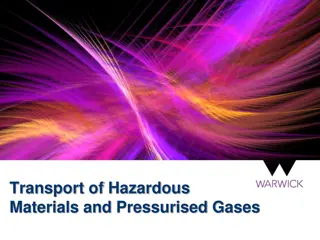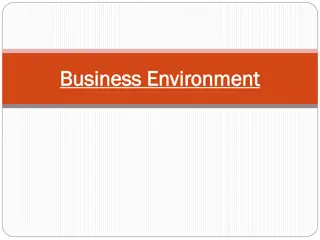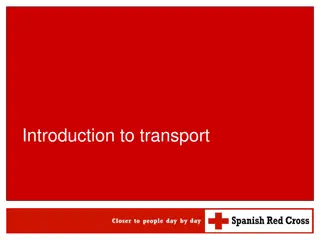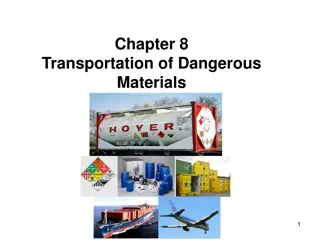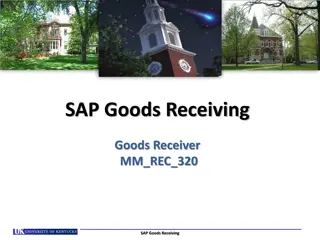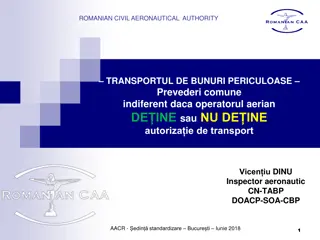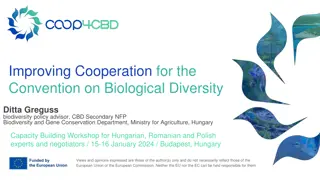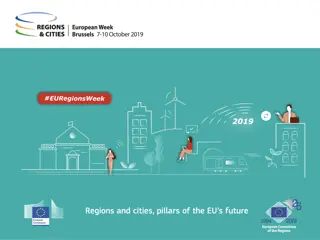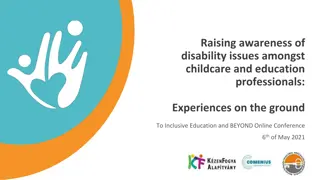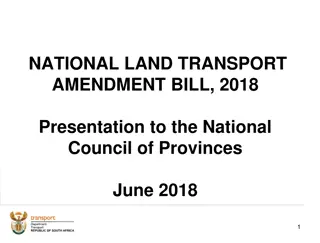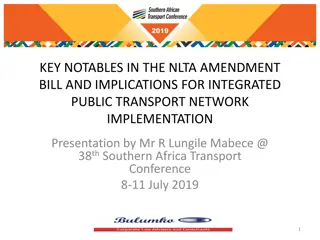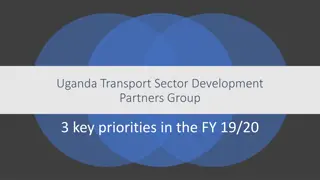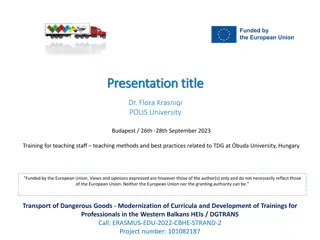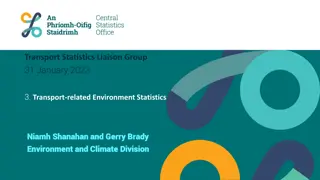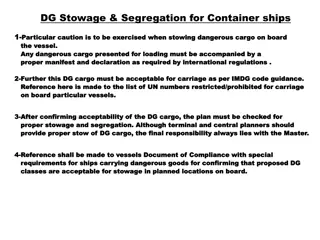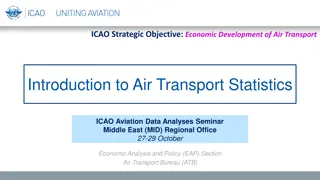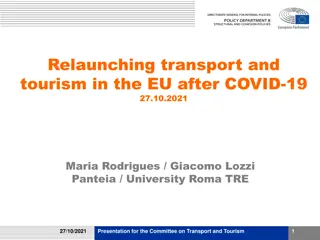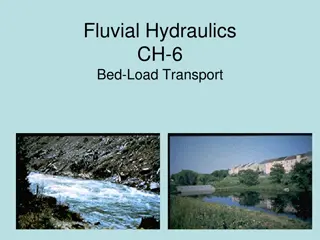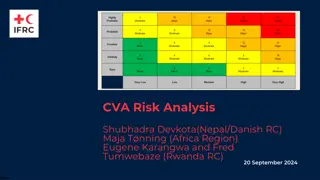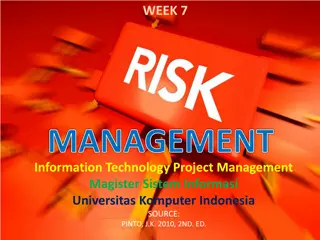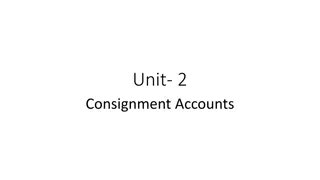Risk Analysis Methods Related to Transport of Dangerous Goods at Buda University, Hungary
Explore risk analysis methods in relation to Transport of Dangerous Goods (TDG) at Buda University, Hungary. Discover best practices for teaching staff through funded training programs aimed at modernizing curricula and developing professionals in the Western Balkans. Learn about European recommendations, agreements, and regulations governing the safe transport of dangerous goods. Dive into the ADR 2023 European Agreement for the carriage of dangerous goods by road.
Download Presentation

Please find below an Image/Link to download the presentation.
The content on the website is provided AS IS for your information and personal use only. It may not be sold, licensed, or shared on other websites without obtaining consent from the author. Download presentation by click this link. If you encounter any issues during the download, it is possible that the publisher has removed the file from their server.
E N D
Presentation Transcript
Risk analysis methods what can be Risk analysis methods what can be used in relation to TDG used in relation to TDG Georgina N ra T th, OE BGK gota Dr gelyi-Kiss, OE BGK Training for teaching staff teaching methods and best practices related to TDG at buda University, Hungary / 26-28 Sept, 2023 "Funded by the European Union. Views and opinions expressed are however those of the author(s) only and do not necessarily reflect those of the European Union. Neither the European Union nor the granting authority can be." Transport of Dangerous Goods - Modernization of Curricula and Development of Trainings for Professionals in the Western Balkans HEIs / DGTRANS Call: ERASMUS-EDU-2022-CBHE-STRAND-2 Project number: 101082187
Possible routes for the TDG in Hungary Transport of Dangerous Goods - Modernization of Curricula and Development of Trainings for Professionals in the Western Balkans HEIs / DGTRANS
EUROPEAN RECOMMENDATIONS AND AGREEMENTS Transport of Dangerous Goods - Modernization of Curricula and Development of Trainings for Professionals in the Western Balkans HEIs / DGTRANS
Recommendations on the Transport of Dangerous Goods Model Regulations (Rev.22) These recommendations have been developed in the light of technical progress, the advent of new substances and materials, the exigencies of modern transport systems and, above all, the requirement to ensure the safety of people, property and the environment. They are addressed to governments and international organisations concerned with the regulation of the transport of dangerous goods. The Model Regulations cover the classification of dangerous goods, their listing, the use, construction, testing and approval of packagings and portable tanks, as well as consignment procedures such as marking, labelling, placarding and documentation. Transport of Dangerous Goods - Modernization of Curricula and Development of Trainings for Professionals in the Western Balkans HEIs / DGTRANS
ADR 2023 European Agreement, Regular Bound Manual The concerning Carriage of Dangerous Goods by Road ( ADR ) applies to EU member states and a significant number of other signatory countries around the world. ADR 2023 applies from 1 January 2023, although there is a 6-month transitional period until full implementation. European Agreement International the Transport of Dangerous Goods - Modernization of Curricula and Development of Trainings for Professionals in the Western Balkans HEIs / DGTRANS
Regulations Concerning the International Carriage of Dangerous Goods by Rail (RID) Regulations Concerning the International Carriage of Dangerous Goods by Rail (RID) is the part of the Intergovernmental Convention concerning the International Carriage by Rail (OTIF) and Appendix C which is the Regulation concerning the International Carriage of Dangerous Goods by Rail (RID). OTIF concerns the movement of passengers and goods by rail across national borders. It controls the conditions under which that transit is undertaken and establishes a uniform system of law in order to facilitate the continuing development of international rail traffic. This edition is effect from 1 January 2019. Transport of Dangerous Goods - Modernization of Curricula and Development of Trainings for Professionals in the Western Balkans HEIs / DGTRANS
European Agreement Concerning the International Carriage of Dangerous Goods by Inland Waterways (ADN) The International Carriage of Dangerous Goods by Inland Waterways (ADN) of May 2000 has been in force since February 2008. The Regulations annexed to the ADN contain provisions concerning dangerous substances and articles, their carriage in packages and in bulk on board inland navigation vessels or tank vessels, as well as provisions concerning the construction and operation of such vessels. They also address requirements and procedures for inspections, the issue of certificates of approval, recognition of classification societies, monitoring, and training and examination of experts. European Agreement Concerning the Transport of Dangerous Goods - Modernization of Curricula and Development of Trainings for Professionals in the Western Balkans HEIs / DGTRANS
IATA DGR - International Air Transport Association Dangerous Goods Regulations IATA Dangerous Goods Regulations (DGR) 62nd Edition Perfect Bound Manual IATA DGR 62nd Edition 2021. Recognised by airlines worldwide, the IATA Dangerous Goods Regulations (DGR) is the industry standard for shipping dangerous goods by air. Transport of Dangerous Goods - Modernization of Curricula and Development of Trainings for Professionals in the Western Balkans HEIs / DGTRANS
RISK ASSESSMENT DEFINITIONS Transport of Dangerous Goods - Modernization of Curricula and Development of Trainings for Professionals in the Western Balkans HEIs / DGTRANS
Risk According to ISO 31000, risk is the effect of uncertainty and an effect is a positive or negative deviation from what is expected. on objectives Transport of Dangerous Goods - Modernization of Curricula and Development of Trainings for Professionals in the Western Balkans HEIs / DGTRANS
Risk analysis Risk analysis is a process that is used to understand the nature, sources, and causes of the risks that you have identified and to estimate the level of risk. It is also used to study impacts and consequences and to examine the controls that currently exist. How detailed your risk analysis ought to be will depend upon the risk, the purpose of the analysis, the information you have, and the resources available. Transport of Dangerous Goods - Modernization of Curricula and Development of Trainings for Professionals in the Western Balkans HEIs / DGTRANS
Risk assessment Risk assessment is a process that is made up of three separate processes: 1. risk identification, 2. risk analysis, 3. risk evaluation. Transport of Dangerous Goods - Modernization of Curricula and Development of Trainings for Professionals in the Western Balkans HEIs / DGTRANS
Risk assessment Risk identification is a process that is used to find, recognize, and describe the risks that could affect the achievement of objectives. 1. Risk analysis is a process that is used to understand the nature, sources, and causes of the risks that you have identified and to estimate the level of risk. It is also used to study impacts and consequences and to examine the controls that exist. 2. Risk evaluation is a process that is used to compare risk analysis results with risk criteria in order to determine whether or not a specified level of risk is acceptable or tolerable. 3. Transport of Dangerous Goods - Modernization of Curricula and Development of Trainings for Professionals in the Western Balkans HEIs / DGTRANS
Risk assessment How do we do? Transport of Dangerous Goods - Modernization of Curricula and Development of Trainings for Professionals in the Western Balkans HEIs / DGTRANS
QUANTITATIVE AND QUALITATIVE RISK ASSESSMENT Transport of Dangerous Goods - Modernization of Curricula and Development of Trainings for Professionals in the Western Balkans HEIs / DGTRANS
Quantitative and qualitative risk assesment tools IEC 31010:2019 Risk management Risk assessment techniques Transport of Dangerous Goods - Modernization of Curricula and Development of Trainings for Professionals in the Western Balkans HEIs / DGTRANS
Interaction between data sources for TDGs risk [3] assessment Transport of Dangerous Goods - Modernization of Curricula and Development of Trainings for Professionals in the Western Balkans HEIs / DGTRANS
F-N curve Societal risks may be plotted in either of two fashions: Non-cumulative frequency basis. For these graphs, called f-N curves, the value plotted on the y-axis is the discrete frequency of experiencing exactly N fatalities. Cumulative freauencv basis. For these graphs, called F-N curves, the value plotted on the y-axis is the cumulative frequency of experiencing N or more fatalities. Transport of Dangerous Goods - Modernization of Curricula and Development of Trainings for Professionals in the Western Balkans HEIs / DGTRANS
F-N Calculations Transport of Dangerous Goods - Modernization of Curricula and Development of Trainings for Professionals in the Western Balkans HEIs / DGTRANS
Transport of Dangerous Goods - Modernization of Curricula and Development of Trainings for Professionals in the Western Balkans HEIs / DGTRANS
Event tree analysis The technique used to define potential accident sequences associated with a particular initiating event or set of initiating events. The event tree model describes the logical connection between the potential successes and failures of defined safety systems or safety functions as they respond to the initiating event and the sequence of events. The event tree evaluation can be qualitative or quantitative or both. Transport of Dangerous Goods - Modernization of Curricula and Development of Trainings for Professionals in the Western Balkans HEIs / DGTRANS
Event tree Transport of Dangerous Goods - Modernization of Curricula and Development of Trainings for Professionals in the Western Balkans HEIs / DGTRANS
Event tree analysis for continuous LPG releases Transport of Dangerous Goods - Modernization of Curricula and Development of Trainings for Professionals in the Western Balkans HEIs / DGTRANS
Risk Matrix / Consequence-Likelihood matrix It s a way to display risks according to their consequence and likelihood It combines these caracteristics to display a rating for the significance of risks It uses matrix structure Rating scales and risk levels can be defined Transport of Dangerous Goods - Modernization of Curricula and Development of Trainings for Professionals in the Western Balkans HEIs / DGTRANS
Consequence scale table Rating Financial Health&safety Enviroment and community Etc. 5. Catastrophic 4. Critical 3. Moderate 2. Minor 1. Neglectable Transport of Dangerous Goods - Modernization of Curricula and Development of Trainings for Professionals in the Western Balkans HEIs / DGTRANS
Likelihood scale table Rating Descriptor Descriptor meaning 5 Certain 4 Likely 3 Possible 2 Unlikely 1 Rare Transport of Dangerous Goods - Modernization of Curricula and Development of Trainings for Professionals in the Western Balkans HEIs / DGTRANS
Classic risk matrix (5x5) Transport of Dangerous Goods - Modernization of Curricula and Development of Trainings for Professionals in the Western Balkans HEIs / DGTRANS
References 1. Terms and definitions https://www.praxiom.com/iso-31000-terms.htm 2. Philippe Cassini. Road transportation of dangerous goods quantitative risk assessment and route comparison. RISK 97, Oct 1997, Amsterdam, Netherlands. pp.141-145. ffineris-00972115f https://ineris.hal.science/ineris-00972115/document 3 . Risk Assessment of Transportation of Dangerous Goods N.Vayiokas Hellenic Institute for Occupational Health and Safety (EL.IN.Y.A.E.), 90 26th October st., Thessaloniki 54628, Greece. https://www.elinyae.gr/sites/default/files/2019- 07/FINAL%20TEXT%20155.1147685341067.pdf 4. Guidelines for Developing Quantitative Safety Risk Criteria by Center for Chemical Process Safety 2009 American Institute of Chemical Engineers, Inc. (https://onlinelibrary.wiley.com/doi/pdf/10.1002/9780470552940.app1 ) Transport of Dangerous Goods - Modernization of Curricula and Development of Trainings for Professionals in the Western Balkans HEIs / DGTRANS
References 5. https://www.icao.int/sam/documents/2014- adsafass/fault%20tree%20analysis%20and%20event%20tree%20analysis.pdf 6. IEC 31010:2019 Risk management Risk assessment techniques Transport of Dangerous Goods - Modernization of Curricula and Development of Trainings for Professionals in the Western Balkans HEIs / DGTRANS
Thank you for your attention! Transport of Dangerous Goods - Modernization of Curricula and Development of Trainings for Professionals in the Western Balkans HEIs / DGTRANS
